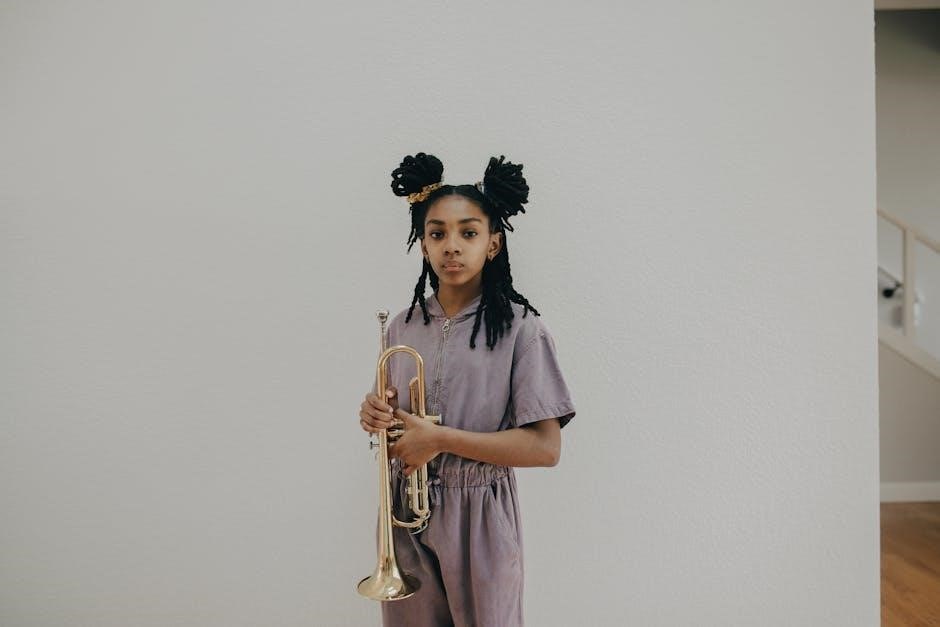Composed in 1796 for Anton Weidinger, Haydn’s Trumpet Concerto in E-flat major (Hob.VIIe:1) showcases chromatic innovation, made possible by Weidinger’s keyed trumpet. A cornerstone of trumpet repertoire, it remains a celebrated masterpiece, with PDF sheet music widely available for modern performers.
Overview of the Concerto
Haydn’s Trumpet Concerto in E-flat major (Hob.VIIe:1) is a seminal work in classical music, composed in 1796 for Anton Weidinger, a pioneering trumpeter. The concerto is structured in three movements: Allegro, Andante, and Allegro, showcasing Haydn’s mastery of classical form and melodic elegance. It was revolutionary for its time, leveraging Weidinger’s innovations in trumpet design, which enabled chromatic passages previously unattainable. The concerto’s technical demands and lyrical beauty have solidified its place as a cornerstone of trumpet repertoire. Today, it remains a favorite among musicians and audiences alike, with its PDF sheet music and arrangements widely accessible for study and performance. This concerto not only highlights Haydn’s compositional brilliance but also reflects the evolution of the trumpet as a solo instrument in classical music.
Historical Context and Dedication
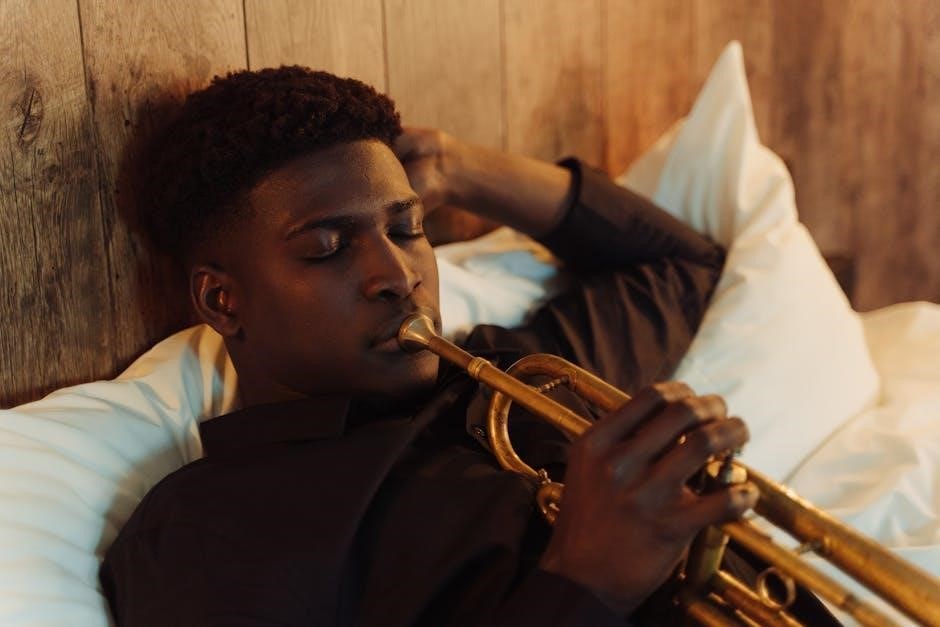
Haydn’s Trumpet Concerto in E-flat major (Hob.VIIe:1) was composed in 1796 during Haydn’s prolific career in Vienna. It was dedicated to Anton Weidinger, a virtuosic trumpeter of the Imperial Court Orchestra, who played a crucial role in the development of the keyed trumpet. Weidinger’s innovations allowed for greater chromatic possibilities, which Haydn skillfully incorporated into the concerto. The work was a testament to their friendship and a celebration of Weidinger’s technical prowess. Historically, the concerto marked a significant advancement in trumpet repertoire, showcasing the instrument’s expanded capabilities. Its composition also reflected Haydn’s deep understanding of orchestral balance and his ability to craft music that highlighted both the soloist and the ensemble. This dedication underscores the concerto’s importance as a landmark in classical music history, bridging innovation and tradition. The concerto remains a cherished gift to the trumpet community, honoring Weidinger’s legacy and Haydn’s compositional genius.
Significance in Trumpet Repertoire
Haydn’s Trumpet Concerto in E-flat major holds a revered place in trumpet repertoire, celebrated for its technical brilliance and lyrical beauty. Composed in 1796, it was one of the first concertos to exploit the chromatic capabilities of the keyed trumpet, developed by Anton Weidinger. This innovation allowed for unprecedented expressiveness and virtuosity, setting a new standard for trumpet music. The concerto’s balanced blend of melodic elegance and technical demands has made it a cornerstone of classical trumpet education and performance. Its enduring popularity lies in its ability to showcase both the trumpet’s agility and its capacity for emotional depth. Today, it remains a staple in trumpet pedagogy and a favorite among audiences, solidifying its legacy as a foundational work in the classical trumpet repertoire. The concerto’s historical significance and artistic value continue to inspire generations of musicians and composers alike.
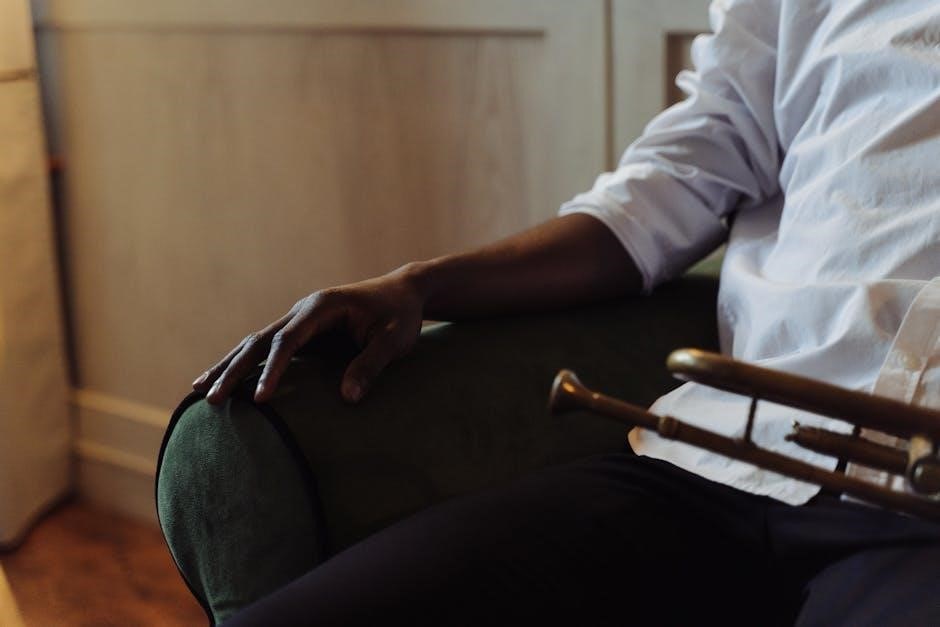
Structure and Movements
Haydn’s Trumpet Concerto in E-flat major is structured in three movements: Allegro, Andante, and Rondo (Allegro). Composed in 1796, it features a classical sonata form with a lyrical slow movement and a lively finale.

First Movement: Allegro
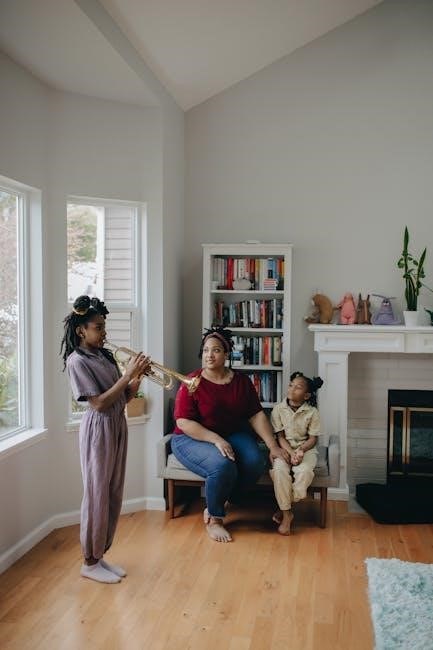
The Allegro movement of Haydn’s Trumpet Concerto in E-flat major (Hob.VIIe:1) is a vibrant and energetic opening, showcasing the solo trumpet’s technical brilliance. Composed in 1796, it was dedicated to Anton Weidinger, a pioneering trumpeter who inspired Haydn to explore the instrument’s chromatic capabilities. The movement follows a classical sonata form, with a clear exposition, development, and recapitulation. The soloist engages in a dynamic dialogue with the orchestra, featuring intricate passages and melodic themes. Haydn’s masterful use of harmony and rhythm highlights the trumpet’s agility, while the orchestral accompaniment provides a rich, supportive texture. This movement is a cornerstone of trumpet repertoire, with its PDF sheet music widely available for study and performance, allowing modern musicians to interpret Haydn’s timeless work with precision and artistry.
Second Movement: Andante
The Andante movement of Haydn’s Trumpet Concerto in E-flat major (Hob.VIIe:1) is a lyrical and contemplative slow movement, providing a stark contrast to the energetic Allegro. The trumpet introduces a beautiful, melancholic melody that unfolds with grace, supported by the orchestra’s subtle accompaniment. Haydn’s mastery of phrasing and harmonic development is evident, as the movement progresses with emotional depth and introspection. The soloist’s ability to convey expressiveness is highlighted, making this movement a favorite among trumpet players. The Andante is a testament to Haydn’s ability to blend technical demands with musicality. PDF sheet music of this movement is widely available, allowing performers to study and interpret its nuances, ensuring its continued relevance in classical trumpet repertoire.

Third Movement: Allegro
The final Allegro movement of Haydn’s Trumpet Concerto in E-flat major (Hob.VIIe:1) is a lively and virtuosic finale, showcasing the trumpet’s technical brilliance. The movement is characterized by its energetic rhythms, playful dialogue between the soloist and orchestra, and a sense of joyful exuberance. Haydn’s use of chromatic passages and intricate fingerings highlights the advancements in trumpet design, particularly the innovations of Anton Weidinger. The soloist must navigate rapid arpeggios and melodic leaps with precision, demonstrating both technical mastery and musicality. The Allegro concludes the concerto on a triumphant note, solidifying its place as a cornerstone of the trumpet repertoire. PDF sheet music of this movement is widely available, offering performers the opportunity to explore its technical and artistic challenges.
Sheet Music and PDF Availability
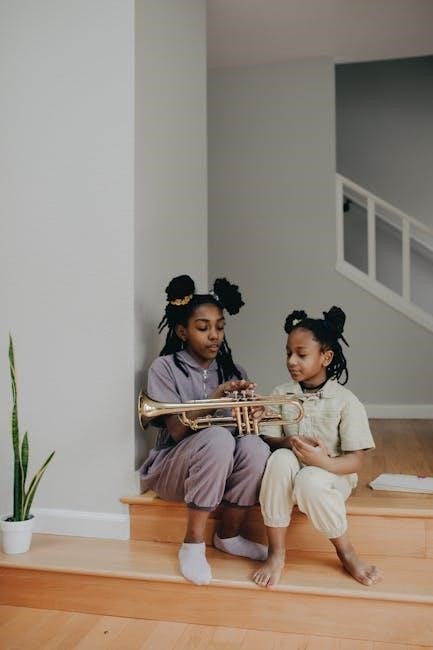
Haydn’s Trumpet Concerto in E-flat major is widely available in PDF and MIDI formats for free download or purchase. Websites like MuseScore and music-scores.com offer high-quality sheet music, suitable for both professional and amateur trumpet players.
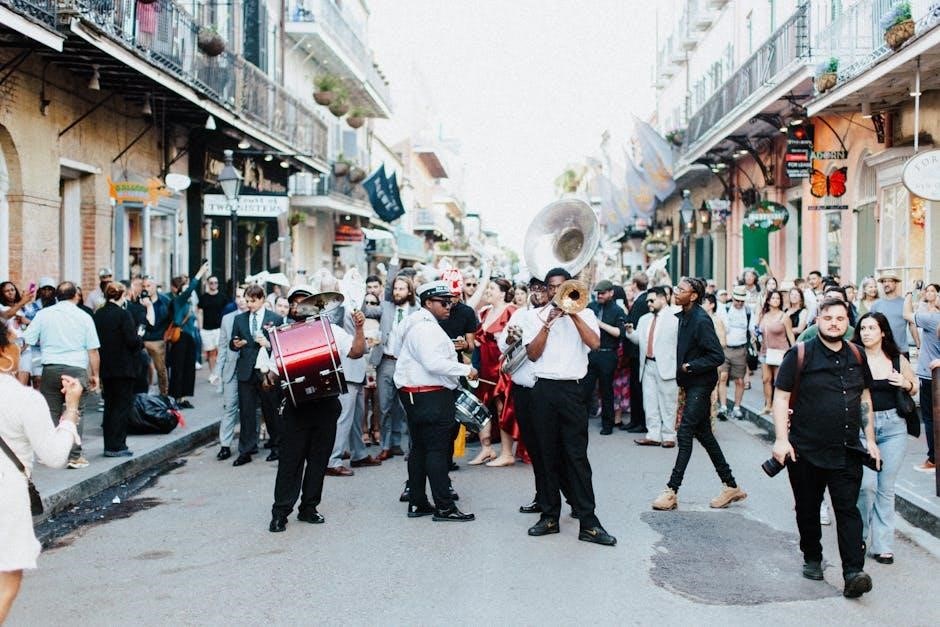
Downloading the PDF Version
Downloading the PDF version of Haydn’s Trumpet Concerto in E-flat major is straightforward. Websites like MuseScore and music-scores.com offer free or paid downloads. The concerto is available in both PDF and MIDI formats, catering to different needs. Many platforms provide high-quality sheet music that includes the solo trumpet part in B-flat and optional piano accompaniment. Some sites also offer transposition to other keys, ensuring accessibility for various instrumentalists. Additionally, certain resources include play-along MP3 files, aiding in practice and performance preparation. Legal access to these files is guaranteed through reputable sources, making it easy for musicians to acquire and perform this timeless piece. Ensure to explore these platforms for the best quality and convenience. Always verify the source for copyright compliance when downloading sheet music.
Instrumentation and Parts
Haydn’s Trumpet Concerto in E-flat major (Hob.VIIe:1) is scored for a solo trumpet and orchestra. The orchestration typically includes strings, woodwinds, brass, and percussion. The solo trumpet part was originally written in E-flat but is often transcribed for B-flat trumpet, the modern standard. Various arrangements exist, including versions for trumpet and piano or smaller ensembles. The concerto’s sheet music is widely available in PDF format, with options for solo parts, full scores, and individual orchestral sections. Some editions include cadenzas and optional parts for E-flat trumpet. The orchestral parts typically encompass violins, violas, cellos, double basses, flutes, oboes, clarinets, bassoons, horns, and timpani. These resources are accessible on platforms like MuseScore and other music libraries, ensuring musicians can obtain high-quality materials for performance and study.
Arrangements and Transcriptions
Haydn’s Trumpet Concerto is available in various arrangements and transcriptions, catering to different performance needs. The concerto is often transcribed for B-flat trumpet, adapting the original E-flat solo part to modern standards. Arrangements for trumpet and piano are popular for practice and recital settings, while orchestral reductions allow for smaller ensembles. Some versions include optional cadenzas, adding a personal touch for soloists. The concerto is also transcribed for other instruments, such as clarinet or trombone, showcasing its melodic versatility. PDF and MIDI files of these arrangements are widely available, enabling musicians to access high-quality materials. Additionally, play-along MP3 accompaniments are offered, aiding in rehearsal and performance preparation. These adaptations ensure the concerto remains accessible and relevant for modern performers and educators.
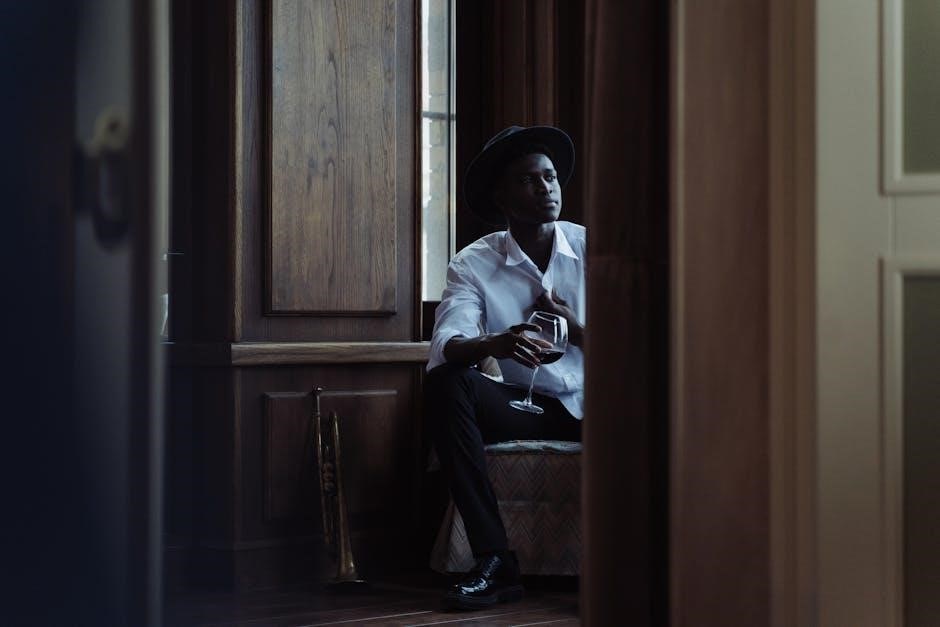
Performance and Interpretation
Haydn’s Trumpet Concerto demands precise technical skill and musicality, reflecting Anton Weidinger’s innovations. Performers must master chromatic passages and phrasing, supported by a balanced orchestral accompaniment.
Technical Challenges for Trumpet Players
Haydn’s Trumpet Concerto presents significant technical challenges, particularly in its chromatic passages and intricate fingerings. The concerto, originally written for Anton Weidinger’s keyed trumpet, demands precise intonation and agility. Modern trumpet players must adapt to the piece’s demanding tessitura and rapid articulations, especially in the Allegro movements. The frequent use of high notes and complex phrasing requires exceptional breath control and embouchure stamina. Additionally, the concerto’s virtuosic nature necessitates careful attention to dynamics and phrasing to maintain musicality. Despite these challenges, the concerto remains a cornerstone of trumpet repertoire, with PDF sheet music widely available for study and performance.
Orchestral Accompaniment Requirements
The orchestral accompaniment for Haydn’s Trumpet Concerto requires a balanced ensemble to support the soloist effectively. A typical Classical-era orchestra includes strings, woodwinds (flutes, oboes, clarinets, bassoons), brass (horns, trumpets), and timpani. The orchestra must provide a clear harmonic foundation while ensuring the solo trumpet remains prominent. Conductors and musicians need to carefully manage dynamics, especially in passages where the trumpet plays intricate melodies or chromatic runs. Articulation and phrasing must align between the soloist and the orchestra to maintain musical cohesion. Additionally, the accompaniment must adapt to the technical demands of the concerto, such as sudden changes in tempo or mood. Proper coordination and sensitivity are essential to showcase both the soloist’s virtuosity and the composer’s elegant orchestration;
Famous Performances and Recordings
Haydn’s Trumpet Concerto has been performed and recorded by numerous renowned trumpeters, solidifying its place in classical music history. Maurice André’s 1969 recording with the Berlin Philharmonic is considered a landmark, showcasing his technical brilliance. Similarly, Håkan Hardenberger’s interpretations are celebrated for their lyrical precision. The concerto’s popularity extends across generations, with modern artists like Alison Balsom and Wynton Marsalis delivering memorable performances. These recordings highlight the work’s enduring appeal and its ability to inspire virtuosic interpretations. Available in formats like PDF and MP3, the concerto remains accessible for study and enjoyment. Its widespread dissemination ensures that Haydn’s masterpiece continues to influence trumpet repertoire and captivate audiences worldwide, maintaining its legacy as a cornerstone of classical trumpet music.
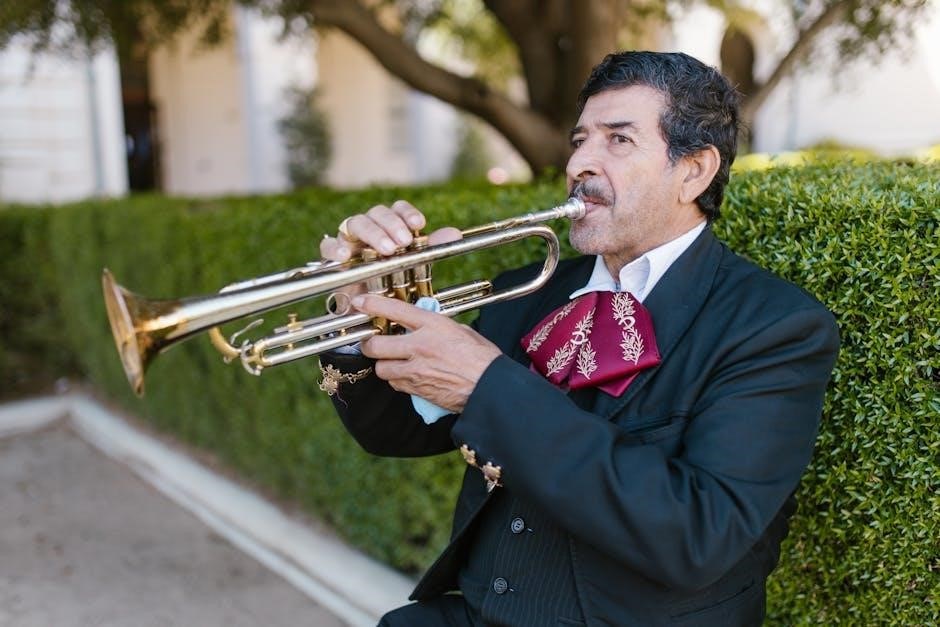
Historical and Cultural Impact
Haydn’s Trumpet Concerto, composed in 1796, revolutionized classical music by showcasing the trumpet’s chromatic capabilities, thanks to Anton Weidinger’s innovations. It remains a cornerstone of trumpet repertoire, inspiring generations of musicians and composers, with its PDF versions ensuring its accessibility and enduring cultural significance.
Haydn’s Role in Classical Music
Franz Joseph Haydn, a pivotal figure in the Classical period, is renowned for his transformative contributions to symphonic and chamber music. Alongside Mozart and Beethoven, he epitomized Viennese classicism, laying the groundwork for future composers. Haydn’s mastery of musical structure and his innovative use of thematic development elevated the symphony and string quartet to new heights. His Trumpet Concerto, composed in 1796 for Anton Weidinger, exemplifies his ability to adapt to instrumental innovations, showcasing the trumpet’s expanded chromatic capabilities. This concerto, widely available in PDF formats, remains a testament to Haydn’s enduring influence, blending technical brilliance with lyrical beauty. His legacy continues to inspire musicians, solidifying his role as a cornerstone of classical music history.
Influence of Anton Weidinger’s Trumpet Innovations
Anton Weidinger, a virtuosic trumpeter, revolutionized the instrument by introducing keyed mechanisms, enabling chromatic play and expanding its musical range; His innovations inspired Haydn to compose the Trumpet Concerto in E-flat major, tailored to Weidinger’s enhanced trumpet. The concerto’s chromatic passages highlight Weidinger’s improvements, showcasing the instrument’s new capabilities. This collaboration not only elevated the trumpet’s status in classical music but also paved the way for future compositions. Weidinger’s influence is evident in the concerto’s technical demands, which remain a benchmark for trumpeters. Today, PDF sheet music of the concerto is widely available, allowing modern musicians to study and perform this landmark piece, celebrating both Haydn’s compositional genius and Weidinger’s instrumental breakthroughs.
Legacy of the Concerto in Modern Times
Haydn’s Trumpet Concerto in E-flat major endures as a cornerstone of classical trumpet repertoire, celebrated for its melodic elegance and technical brilliance. The concerto’s accessibility and artistry have made it a staple in modern performances and educational settings. With the advent of digital platforms, PDF sheet music and MIDI files are readily available, enabling global access for musicians to study and perform the piece. Its influence extends beyond classical circles, inspiring adaptations and transcriptions for various ensembles. Despite being composed over two centuries ago, the concerto remains a vibrant testament to Haydn’s mastery and Weidinger’s innovation, continuing to captivate audiences and inspire new generations of trumpeters and music enthusiasts alike.
Haydn’s Trumpet Concerto in E-flat major stands as a timeless masterpiece of classical music, blending technical brilliance with melodic beauty. Composed in 1796 for Anton Weidinger, it revolutionized the trumpet’s role in orchestral music. Its enduring popularity is evident in the widespread availability of PDF sheet music and performances by trumpeters worldwide. The concerto’s chromatic passages, facilitated by Weidinger’s innovations, showcase Haydn’s compositional genius. Today, it remains a cornerstone of trumpet repertoire, inspiring both professional musicians and students. The concerto’s legacy is a testament to Haydn’s influence on classical music and the enduring appeal of his work; Its continued relevance in modern times underscores its importance as a foundational piece in musical history.
